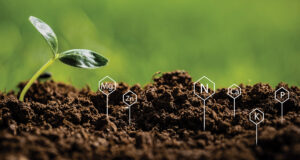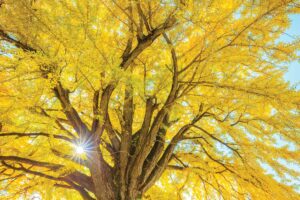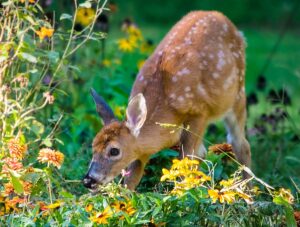In recent years, gardeners have probably noticed less garden impatiens (Impatiens walleriana), being sold in local garden centers. This is due to a disease outbreak in impatiens called downy mildew of impatiens (Plasmopara obducens).
In 2011, the University of Illinois Plant Clinic began receiving reports that downy mildew was a problem in landscapes in the Chicago area, and the disease continued to spread to other areas of Illinois.
This particular downy mildew affects all varieties of Impatiens walleriana, the traditional garden impatiens, that many rely on for color in shady areas. With downy mildew, gardeners notice leaves curling downward on newer growth. Soon, white to light-gray fuzz may show on leaf undersides. New leaves may appear as stunted or discolored (yellow or pale green). Unfortunately, this disease can infect quickly and cause complete leaf defoliation or plant collapse to occur.
The U of I Plant Clinic recommends that gardeners who find downy mildew remove all diseased plant material to avoid further infection in the garden or neighbors’ gardens. It may be difficult to rid the planting area of this disease because the pathogen can remain in the soil.
What should a gardener do? This doesn’t mean impatiens can never be planted again. Look at this as an opportunity to diversify the garden and plant some alternative shade annuals.
There is much research and breeding work ongoing to bring to market a disease resistant garden impatiens. According to industry sources, a new disease resistant impatiens series is expected to be launched commercially by PanAmerican Seed in 2020, with many trials taking place between now and then.
For this season, consider a few of these great shade annual alternatives to try in your garden:
- Begonias: Rex begonia (Begonia rex-cultorum), wax begonia (Begonia x semperflorens), tuberose begonia (Begonia tuberhybrida) and angel wing begonia (Begonia coccinea) are all great foliage or flowering plants for part shade to shade.
- Fuchsia (Fuchsia x hybrid): Nice blooms of reds, pinks and lavenders for part shade. Great in hanging baskets.
- Bloodleaf (Iresine herbstii): Shiny foliage plants with bright pink or lime green accents for part shade to shade.
- New Guinea impatiens (Impatiens hawkeri): This species of impatiens is resistant to downy mildew. It features large flowers on vigorous plants in many colors for part shade to shade.
- Coleus (Solenostemon scutellariodes): Great, vigorous foliage plants for shade to part shade with lots of colors and patterns. Some varieties available for sun as well.
- Heliotrope (Heliotropium arborescens): Beautiful, fragrant, purple flowers best used in partial shade with moist, but not wet soils.
- Sweet potato vine (Ipomea batatas): Vining plant with various colors and shapes great for part shade.
- Salvia (Salvia splendens): Various colored flowers best for part shade.
- Browallia (Browallia speciosa): Older, reliable annual for abundant flowering. Best in part shade.
Check out the University of Illinois Extension website, Beyond Impatiens and Petunias, for more information on shade alternatives: http://urbanext.illinois.edu/beyond/








